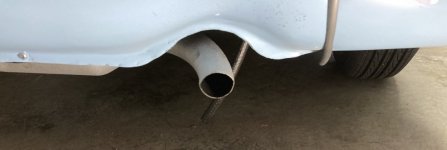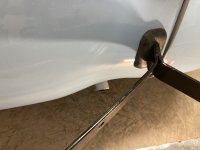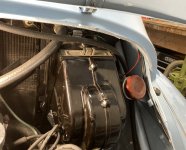The heater in my 4cv smells bad - there seems to be a small amount of exhaust getting into it. There was previously a lot more exhaust getting into it due to a leak where the exhaust pipe connects to the autobleu manifold. I even took off the manifold to make sure it was sealed at the head. The muffler is not leaking, and it is sealed where it meets the pipe from the manifold. Has anyone else had this problem?
I am surprised that exhaust would get into the heater even with a small leak. I have all the proper radiator cardboard pieces in place along with all the sheet metal parts in the engine compartment. Would a slightly longer pipe on the exit of the muffler help?
The fan is running a little faster than originally. I have the voltage convertor set for about 8v and I get lots of warm heat in the car. This would be great if it did not stink!
I am surprised that exhaust would get into the heater even with a small leak. I have all the proper radiator cardboard pieces in place along with all the sheet metal parts in the engine compartment. Would a slightly longer pipe on the exit of the muffler help?
The fan is running a little faster than originally. I have the voltage convertor set for about 8v and I get lots of warm heat in the car. This would be great if it did not stink!



